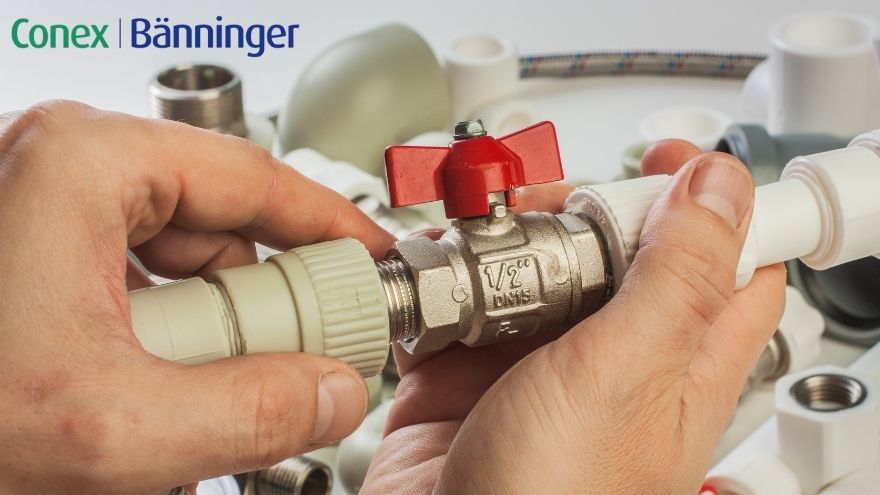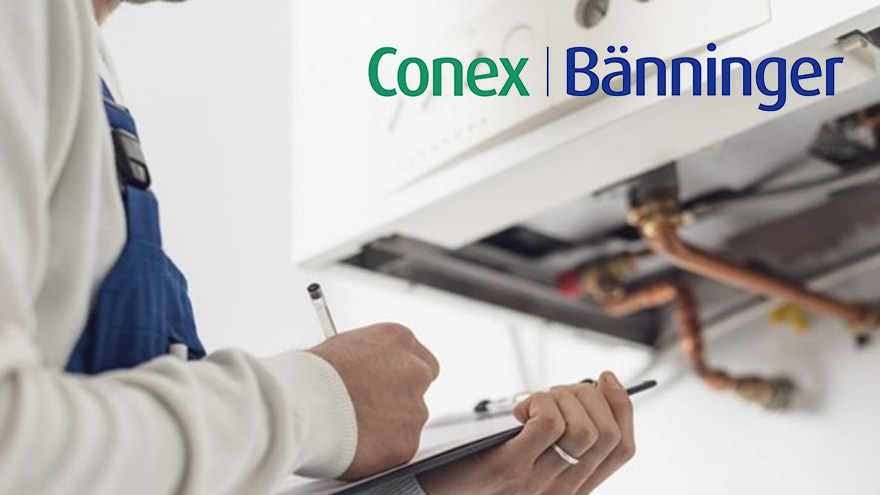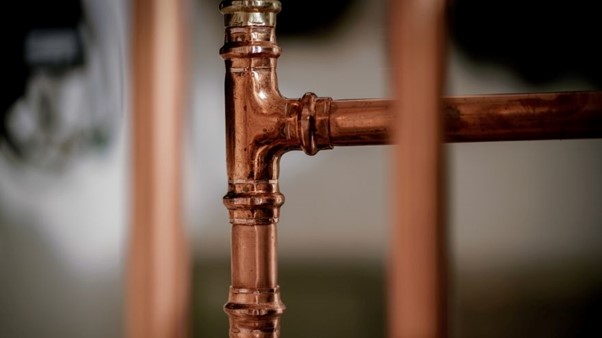The gas installation is one of the most frequently used heating systems. Despite the rising prices of blue fuel, it is a much more attractive solution than expensive electric heating or environmentally harmful coal. However, the operation of a gas installation involves a slightly higher level of risk, so special attention should be paid to its installation. If you are doing this type of projects, be sure to check out our guide!

From this article you will learn:
- what formalities should be completed before installing the gas installation,
- what to remember when installing gas lines,
- what products to use for installing gas installations.
Check out gas pipes from Conex Banninger
Installation of the gas installation – applicable regulations
Due to the safety of users of the gas installation, its implementation is subject to specific regulations that must be strictly observed. The formalities preceding the installation of the system come down to 4 key steps:
1. Gas installation design
The gas installation in the house can only be created on the basis of a professional design. Its implementation must be carried out by a person with the required authorizations in this area. Obtaining a diagram may cost an investor from PLN 500 to PLN 1,200.
2. Building permit
The installation of a gas installation requires a permit, which may be granted on the basis of an application for the construction of a single-family house. However, if it does not cover the diagram of internal gas installations, it will be necessary to obtain an additional decision. For this purpose, together with the appropriate application, the investor must submit a design, a positive chimney sweep opinion, an illustrative map, and a declaration of the right to use the property for construction purposes.
3. Construction and tightness test of the gas installation
At the stage of installing the gas installation, it is necessary to follow strict rules. Firstly, a construction log must be kept, and work can only be carried out by an entity with appropriate authorizations. Secondly, after completion, the system - in the presence of the construction manager and the gas recipient - must be subjected to a tightness test.
4. Agreement with the gas supplier
In order for the investor to start using the installation, it is necessary to make a gas connection, which requires concluding an agreement with the fuel supplier. The appropriate application can be submitted in person, by post or online. After signing the documents, the gas meter is installed, so that the operator can start providing its service. The launch of gas supplies requires the presentation of appropriate as-built documents, including:
- gas installation design,
- declarations of the construction manager on the implementation of works in accordance with the design,
- permissions to use the installation (optional),
- report on the technical acceptance of the gas installation and tightness test,
- chimney inspection protocol.

Installation of a gas installation – what to remember?
Construction law regulates not only the formalities that must be completed when installing gas installations, but also the requirements regarding the materials used. Three types of cables can be used in this type of systems:
- steel pipes,
- copper pipes,
- polyethylene pipes.
The rules for guiding and connecting them depend on the material from which they are made. First of all, remember that steel pipes can be used both indoors and outdoors. Copper gas pipes are only suitable for indoor use.
Vertical pipes must be made of steel and have no seams. Horizontal steel pipes can be welded or screwed together with threaded connectors. You should also remember to seal the joints effectively. For this purpose, Teflon tape or special paste is used. It is also worth using anti-corrosion paint to properly protect the pipes.
Check out gas pipes from Conex Banninger
Copper pipes are connected in one of two ways - with hard-soldered connectors or pressed connectors. If possible, it is worth choosing the second method, because it significantly facilitates the installation of the gas installation, shortens its time and increases the flexibility of the system. Therefore, it is an economical and safe solution that allows you to avoid the use of open flame or nitrogen.
It is also worth mentioning very functional plastic pipes, which are increasingly replacing steel pipes in the external sections of the home gas network. They are characterized by a high level of flexibility and durability. They are connected either by butt welding or electrofusion. However, it should be remembered that in order to connect polyethylene pipes to steel or copper installations, it is necessary to use appropriate threaded and transition connectors: PE-steel or PE-copper.
Gas installation at home – installation regulations
The process of installing the gas installation itself is also subject to restrictive regulations. These rules are specified primarily in the Regulation of the Minister of Infrastructure of April 12, 2002 on the technical conditions to be met by buildings and their location.
According to applicable law, the arrangement of horizontal pipes depends primarily on the type of fuel. Liquid gas pipes are placed near the floor, only in rooms located above ground level. Cables transporting natural gas must be placed under the ceiling, at least 10 cm higher than other installations.
 It is also very important to use at least 2 cm gaps between gas pipes and cables of other systems - for example, the electrical network. When installing your home gas network, try to avoid long, straight sections and running pipes in living rooms. Cables must also not run through or under foundations.
It is also very important to use at least 2 cm gaps between gas pipes and cables of other systems - for example, the electrical network. When installing your home gas network, try to avoid long, straight sections and running pipes in living rooms. Cables must also not run through or under foundations.
Gas installation design – what products to use?
If you perform gas installations for your clients, purchase high-quality components from a well-known manufacturer. Using the range of a brand such as Conex , you can easily create a complete gas installation, tailored to the specificity of a given facility and the individual needs of a specific user.
Exchange benefits in the new OnnTop loyalty platform!
Depending on what pipes your home's gas installation will be made of, you will need various elements to connect them. Conex's offer includes, among others:
- bronze connectors – used to connect steel cables and include, for example, elbows, sleeves and nipples,
- pressed copper connectors – used for quick and tight connection of copper gas pipes using an innovative method,
- brazed copper connectors – used in the process of hard-joining copper conductors and covering a wide range of different components in many sizes.
The Conex assortment available at the Onninen wholesaler includes various elements of the gas installation necessary in the process of connecting all types of pipes. Get bronze or copper connectors and guarantee your customers the safe operation of an efficient heating system!